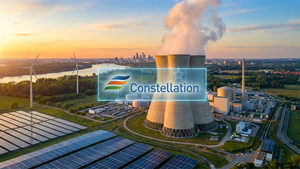Homes With Low Natural Disaster Risk Are Rising in Value Faster Than Homes With High Risk for the First Time in Over a Decade
Redfin reports that this year marked the first time since 2010 that low-risk homes across three major climate categories—heat, fire and flood—gained value faster than high-risk homes. That may be a sign Americans are growing more responsive to natural disasters.
(NASDAQ: RDFN) — For the first time since 2010, homes facing low risk from natural disasters are rising in value faster than homes facing high risk, according to a new report from Redfin (redfin.com), the technology-powered real estate brokerage.
- The total value of U.S. homes facing low risk of extreme heat is up 7% year over year to $17.7 trillion. The total value of homes facing high risk of extreme heat is up 6.3% to $29.7 trillion.
- The total value of homes facing low flood risk is up 6.7% year over year to $40.2 trillion. The total value of homes facing high flood risk is up 6% to $7.2 trillion.
- The total value of homes facing low fire risk is up 6.6% year over year to $39 trillion. The total value of homes facing high fire risk is up 6.4% to $8.4 trillion.
While these differences are small, they are notable because this year marked the first time since 2010 that low-risk homes across all three categories—heat, flood and fire—rose in value faster than high-risk homes.
Low-risk homes across all three risk categories have been gaining value faster than high-risk homes since February 2024. This is the first time Redfin is reporting the trend.
“The fact that this is happening across risk types—and thus, across the country—is some of the best evidence we have that climate change is impacting people’s homebuying decisions,” said Redfin Senior Economist Elijah de la Campa. “With climate catastrophes becoming increasingly frequent and calamitous, many people have decided they don’t want to live in risky areas. And with insurance costs skyrocketing, many risky areas that were once affordable have become prohibitively expensive. The reality of climate change is setting in and it’s causing a reckoning; people are putting disaster risk higher on their list of considerations when looking for a home.”
Recent shifts in where Americans are choosing to live also indicate that people may be growing more responsive to climate risk. In California, high-fire-risk areas saw more people leave than move in last year—a reversal from the prior year. Additionally, a Redfin-commissioned survey conducted by Ipsos in October found that nearly one-third of young adults say Hurricane Helene made them reconsider where they want to live in the future.
One reason the value of low-risk homes is rising faster than the value of high-risk homes is that Florida and Texas—which both face high natural disaster risk—have seen among the slowest home value growth in the nation over the last year. In some areas, including hurricane-prone parts of Florida, that’s likely due to natural disaster risk itself. But it’s also because the rising cost of other things, like insurance and property taxes, has hurt demand. Additionally, Florida and Texas are building more homes than anywhere else in the country, putting a lid on value growth.
While climate risk has become a top consideration for some house hunters, that’s certainly not the case for everyone. There are still more people moving into than out of disaster-prone America as a whole, which is one reason home values in disaster-prone areas continue to climb.
Home Values in High-Risk Areas Are Still Up More Than 60% Since Before the Pandemic
The value of both high- and low-risk homes is up substantially from before the pandemic—largely due to the 2020-2021 homebuying frenzy—but it’s up most for high-risk homes:
- The total value of homes facing high risk of extreme heat is up 62.5% from before the pandemic. The total value of homes facing low risk of extreme heat is up 53.2%.
- The total value of homes facing high flood risk is up 60.3% from before the pandemic. The total value of homes facing low risk is up 58.7%.
- The total value of homes facing high fire risk is up 67.8% from before the pandemic. The total value of homes facing low fire risk is up 57.2%.
The value of the U.S. housing market skyrocketed during the pandemic as fierce homebuying demand—driven by record-low mortgage rates—caused buyers to bid up values. Some of the fiercest competition occurred in the Sun Belt, as the region’s relatively affordable housing attracted hordes of homebuyers from more expensive states. But the Sun Belt is home to many places prone to flooding, extreme heat and/or fires, including Florida, Arizona and Texas.
Home values in disaster-prone areas continue to rise in part because there’s still demand for homes in these areas. Some people relocate to disaster-prone areas because many of those areas are relatively affordable.
Home values in both risky and non-risky areas also continue to rise because the mortgage rate lock-in effect has exacerbated America’s shortage of homes for sale, putting upward pressure on values.
This is based on a Redfin analysis of climate-risk scores from First Street and Redfin Estimates for roughly 93 million U.S. residential properties as of June 2024. Year-ago values represent June 2023, and pre-pandemic values represent June 2019. This data is subject to revision. Roughly 58 million U.S. homes face high heat risk, while roughly 15 million face high fire risk and roughly 13 million face high flood risk. Please note that some homes face more than one type of risk.
To view the full report, including charts and more details on methodology, please visit: https://www.redfin.com/news/home-values-climate-risk-2024/
About Redfin
Redfin (www.redfin.com) is a technology-powered real estate company. We help people find a place to live with brokerage, rentals, lending, and title insurance services. We run the country's #1 real estate brokerage site. Our customers can save thousands in fees while working with a top agent. Our home-buying customers see homes first with on-demand tours, and our lending and title services help them close quickly. Our rentals business empowers millions nationwide to find apartments and houses for rent. Since launching in 2006, we've saved customers more than $1.6 billion in commissions. We serve approximately 100 markets across the U.S. and Canada and employ over 4,000 people.
Redfin’s subsidiaries and affiliated brands include: Bay Equity Home Loans®, Rent.™, Apartment Guide®, Title Forward® and WalkScore®.
For more information or to contact a local Redfin real estate agent, visit www.redfin.com. To learn about housing market trends and download data, visit the Redfin Data Center. To be added to Redfin's press release distribution list, email press@redfin.com. To view Redfin's press center, click here.
View source version on businesswire.com: https://www.businesswire.com/news/home/20241120421442/en/
Contacts
Contact Redfin
Redfin Journalist Services:
Isabelle Novak
press@redfin.com
More News
View More




Recent Quotes
View More
Quotes delayed at least 20 minutes.
By accessing this page, you agree to the Privacy Policy and Terms Of Service.